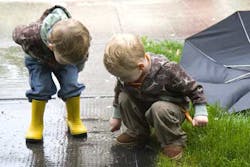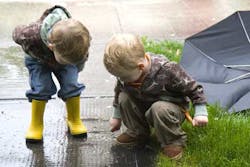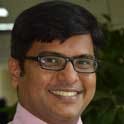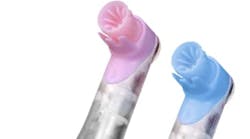Foreign bodies in children's teeth: anticipatory guidance recommendations for the dental professional
Keywords: anticipatory guidance, foreign objects, parental counseling
Abstract
The American Academy of Pediatric Dentistry (AAPD) puts special emphasis on anticipatory guidance in pediatric oral health. It essentially comprises topics such as oral hygiene and dietary habits, injury prevention, non-nutritive habits, substance abuse, intraoral/perioral piercing, and speech/language development. But certain lacunae exist in terms of the sequelae of untreated caries and trauma to primary and permanent dentition. There is a significant chance of a self-injurious act performed by the child with atypical foreign objects that might result in complications such as exposure of the vital pulp or that might result in breakage of the foreign object leading to dental pain and infection. Also, there may be serious alarming consequences such as aspiration or inhalation of the foreign object. Alerting parents about these possible self-injurious acts with atypical foreign objects in cases of untreated caries and traumatized teeth in young children seems to be an imperative factor that can be integrated into the anticipatory guidance by the health-care professionals.
Copyright Dreamstime.com
It essentially comprises of topics such as oral hygiene and dietary habits, injury prevention, non-nutritive habits, substance abuse, intraoral/perioral piercing, and speech/language development. (4) But certain lacunae exist in terms of the sequelae of untreated caries and trauma to primary and permanent dentition. In such circumstances, there is a significant chance of a self-injurious act performed by the child with atypical foreign objects that might result in complications such as exposure of the vital pulp or might result in breakage of the foreign object, leading to dental pain and infection.Complications can ensue if these impacted foci of infection are not eliminated at the right instant. Costa reported chronic maxillary sinusitis of dental origin that occurred due to pushing of foreign bodies into the maxillary sinus through the root canals.(5) Goldstein cited development of actinomycosis due to lodgment of a piece of jewellery chain into a maxillary central incisor. (6) Also, there may be serious alarming consequences such as aspiration or inhalation of the foreign object.
Introduction of foreign objects into the oral cavity or cavitated and traumatized tooth may be the result of the child’s effort to relieve the discomfort. Sometimes unawareness among parents and caregivers can also lead to such consequences. These foreign objects may be discovered during routine examinations by dentists(7) and dental hygienists.
Atypical foreign objects range from darning needles and (8) metal screws (9) to beads, (10) and stapler pins. (11) Lamster and Barenie(12) reported a conical metallic object in the distal root of the primary left first molar. Gelfman (13) and colleagues reported two straws in the root canal of a primary central incisor. Grossman (14) reported retrieval of indelible ink tips, brads, a toothpick, adsorbent points, and even a tomato seed from the root canals of anterior teeth that were left open for drainage.
Harris (15) reported that the patients had inserted varied objects in the root canal of maxillary anterior teeth so as to remove food plugs. These included pins, a wooden toothpick, plastic objects, toothbrush bristles, and crayons. Zillich and Pickens (16) and Turner (17) cited cases in which hat pins and dressmaker pins in the root canals of maxillary and mandibular incisors that were used to remove the food plugs. Toida (18) has reported a plastic chopstick embedded in an unerupted supernumerary tooth in the premaxillary region. Gujjar et al (19) have reported a broken office pin and pencil tip in deep carious lesions of primary molars. Management of such foreign objects requires thorough clinical and radiographic examination to ascertain the exact location, extent of damage, and the possible atraumatic methods to retrieve the foreign body.
In light of this evidence, alerting parents of these possible self-injurious acts with atypical foreign objects in cases of untreated caries and traumatized teeth in young children seems to be an imperative factor that can be integrated in the anticipatory guidance. Importantly, anticipatory guidance to parents should also include the possible complications caused due to self-injurious behavior with foreign objects in the young child. (19)
Health professionals should play a vital role in early referral of young children with dental caries to the specialists. Pediatricians are well positioned to initiate preventive oral health care by providing early risk assessment, anticipatory guidance, and timely referral to establish a dental home. Potential risks associated with use of foreign objects in the oral cavity should be emphasized during oral health educational campaigns.
What is new about this paper
1. This article advocates that information about insertion of foreign bodies in untreated traumatized or carious teeth and their sequelae be included in the anticipatory guidance given to parents.
2. This will play a definitive role in preventing seemingly innocuous manipulations by parents and children, which may lead to injury to the pulp and/or periodontium.
3. Risk of aspiration is also associated with introduction of such objects into the mouth, and it’s high time that this important component be included in the preventive oral health-care guidelines.
4. If parents get timely counseling, they will be able to prevent uncalled-for injuries and complications.
References
1. Lewis CW, Grossman DC, Domoto PK, Deyo RA. The role of the pediatrician in the oral health of children: a national survey. Pediatrics. 2000;106(6).
2. Hakim RB, Bye BV. Effectiveness of compliance with pediatric preventive care guidelines among Medicaid beneficiaries. Pediatrics.2001;108(1):90-97.
3. Savage MR, Lee JY, Kotch JB, Vann WF Jr. Early preventive dental visits: effects on subsequent utilization and costs. Pediatrics. 2004;114(4).
4. American Academy of Pediatric Dentistry, Guideline on Periodicity of Examination, Preventive Dental Services, Anticipatory Guidance/Counseling, and Oral Treatment for Infants, Children, and Adolescents. Reference manual 2012-13 V-34/NO-6 12/13.
5. Costa F, Robiomy M, Toro C, Sembronio S, Politi M. Endoscopically assisted procedure for the removal of a foreign body from the maxillary sinus and contemporary endodontic surgical treatment of the tooth. Head Face Med 2006;2:37.
6. Goldstein BH, Scuibba JJ, Laskin DM. Actinomycosis of the maxilla: A review of literature and a report case. J Oral Surg 1972;30(5):362-366.
7. Tay ABG. Long-standing intranasal foreign body: an incidental finding on dental radiograph: a case report and literature review. Oral Surg Oral Med Oral Pathol Oral Radiol Endod 1990;4:546-549.
8. Nernst H. Foreign body in the root canal. Quintessenz 1972;23(8):26.
9. Prabhakar AR, Basappa N, Raju OS. Foreign body in a mandibular permanent molar: A case report. J Indian Soc Pedod Prev Dent 1998;16(4):120-121.
10. Subba Reddy VV, Mehta DS. Beads. Oral Surg Oral Med Oral Pathol 1990;69(6):769-70
11. Macauliffe N, Drage NA, Hunter B. Staple diet: A foreign body in a tooth. Int J Paediatr Dent 2005;15:468-471.
12. Lamster IB, Barenie JT. Foreign objects in the root canal: Review of literature and report of 2 cases. Oral Surg Oral Med Oral Pathol 1977;44(3):483-486.
13. Gelfman WE, Cheris LJ, Williams AC. Self attempted endodontics: A case report. J Dent Child 1969;36(4):283-284.
14. Grossman JL, Heaton JF. Endodontic case reports. Dent Clin North Am 1974;18:509-209-227.
15. Harris WE. Foreign bodies in root canals: Report of two cases. J Am Dent Assoc 1972;85(4):906-911.
16. Zillich RM, Pickens TN. Patient-included blockage of the root canal: Report of a case. Oral Surg Oral Med Oral Pathol 1982;54:689-90.
17. Turner CH. An unusual foreign body. Oral Surg Oral Med Oral Pathol 1983;56:226.
18. Toida M, Ichihara H, Okutomi T, Nakamura K, Ishimaru JI. An unusual foreign body in an unerupted supernumerary tooth. Br Dent J 1992;173(10):345-346.
19. Gujjar, Kumar Raghav; Algali, Ghazala; Omar, Suleiman M.; Amith, H.V.; Anegundi, Rajesh T, Foreign Bodies in Primary Molars: A Report of 2 Cases, Journal of Dentistry for Children, Jan.-Apr. 2012;79(1)40-43(4).





